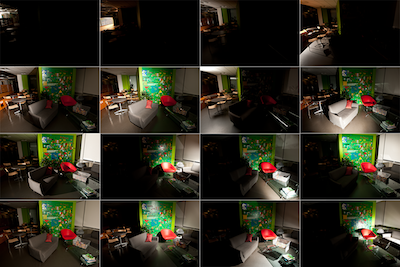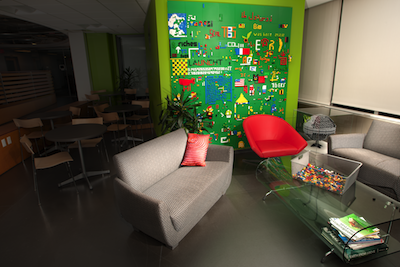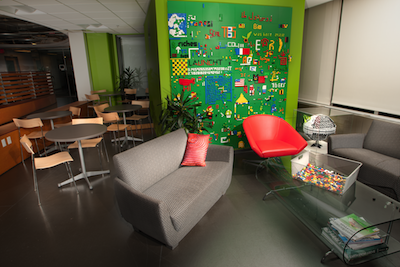User-assisted Image Compositing for Photographic Lighting
Abstract: Good lighting is crucial in photography and can make the difference between a great picture and a discarded image. Traditionally, professional photographers work in a studio with many light sources carefully set up, with the goal of getting a near-final image at exposure time, with post-processing mostly focusing on aspects orthogonal to lighting. Recently, a new workflow has emerged for architectural and commercial photography, where photographers capture several photos from a fixed viewpoint with a moving light source. The objective is not to produce the final result immediately, but rather to capture useful data that are later processed, often significantly, in photo editing software to create the final well-lit image.
This new workflow is flexible, requires less manual setup, and works well for time-constrained shots. But dealing with several tens of unorganized layers is painstaking, requiring hours to days of manual effort, as well as advanced photo editing skills. Our objective in this paper is to make the compositing step easier. We describe a set of optimizations to assemble the input images to create a few basis lights that correspond to common goals pursued by photographers, e.g., accentuating edges and curved regions. We also introduce modifiers that capture standard photographic tasks, e.g., to alter the lights to soften highlights and shadows, akin to umbrellas and soft boxes. Our experiments with novice and professional users show that our approach allows them to quickly create satisfying results, whereas working with unorganized images requires considerably more time. Casual users particularly benefit from our approach since coping with a large number of layers is daunting for them and requires significant experience.
Video:
Links:
- Supplemental material [ PDF, 22MB ]
- Image data [ ZIP, 3.7GB ]
Acknowledgments
We would like to thank the anonymous reviewers for their constructive comments. We would like to acknowledge our funding agencies NSF IIS 1161645 and NSF 1011919, and funding from Adobe. We thank the experienced photographers Michael Kelley, Daniela Steinsapir and Michael Gharbi, and all the participants of our user study.
| Page maintained by Ivaylo Boyadzhiev Last update: July 2013 |


